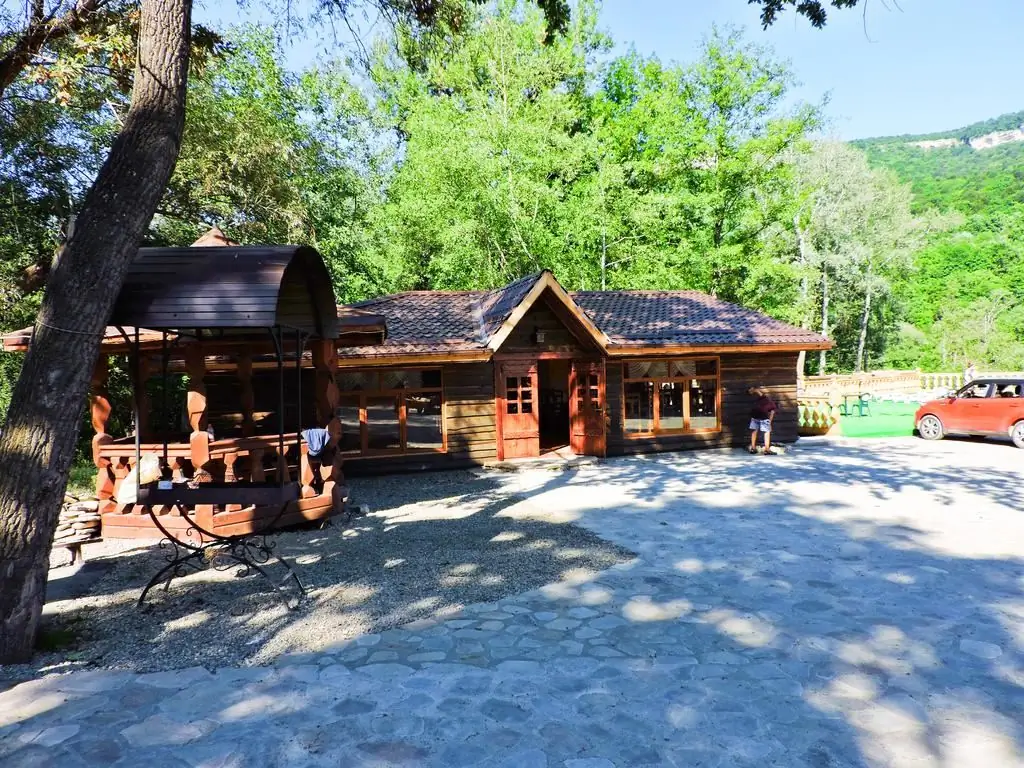- Author Harold Hamphrey [email protected].
- Public 2023-12-17 10:06.
- Last modified 2025-01-24 11:10.
Lake Vozhe, the photo of which is presented in the article, is located near the border between the Vologda and Arkhangelsk regions. It belongs to the Onega River basin. Elongated in a direction from north to south. The length of the reservoir is 64 km, the width varies from 7 to 16 km, the total area is 422 sq. km. The depth of Lake Vozhe is small, so it is considered shallow. Its average does not exceed 1-2 m, however, there are also places where the bottom deepens to a distance of 5 m.

Features of the reservoir
About twenty rivers flow into the lake, the largest of them are Modlon (38% of incoming water), flowing from the south, and Vozhega (34%), whose delta, consisting of three channels, is located in the east. The flow is carried out in the north, through the Svid watercourse, which flows into the Lache, from which the Onega takes its source.
Lake Vozhe (Vologda region) is located on the wide Vozhe-Lachskaya lacustrine-glaciallowlands, and its area belongs to the middle taiga landscape type. The shores are flat, overgrown with reeds, the area around is very swampy.

The beginning of ancient history
The first settlers settled on the shores of the lake in the 7th-6th millennia BC. e. Neolithic settlements of the 4th-3rd centuries were explored in the 1930s-1950s. At that time, in the surrounding forests that surrounded Lake Vozhe, the vegetation was dominated by oak, linden, elm, hazel, and large fauna, in addition to modern bears, elks, wild boars and badgers, was represented by reindeer, maral, roe deer and aurochs.
Relic elms in the Vozhega delta still exist as the last remnant of ancient broad-leaved forests. The ancient ichthyofauna, which included sterlet, asp, catfish, blue bream and rudd, has disappeared by our time.
What's in your name?
In historical times, the region was inhabited by Finno-Ugric tribes, to whom Lake Vozhe owes its name. In the Komi language, "vozh" means "branch". The Vozhega River got its name because it flows into the reservoir in three streams, and the lake was named after this watercourse.
Traditionally, the local Russians called the lake Charondsky, after the name of the only city located on its shore - Charonda. Once it was a rich settlement, the center of the Charozerska volost. But after the restriction under Peter I of international trade through the port of Arkhangelsk and the decline of the route from Belozersk to Pomorie in 1776, he lost his city status.

Settlement of the lake by Russians
Russians began colonization of the Vozhe region in the 11th-12th centuries, simultaneously from the Novgorod Republic and the Rostov-Suzdal land. In the XIV-XV centuries, this process intensified due to the emergence of the monasteries of the Northern Thebaid, which became centers of trade, agriculture and industry. In 1472, the Vozhezersky Monastery was founded on Spas Island in the middle of the lake, the ruins of which have survived to this day.
Use of Lake Vozhe
Agriculture in this area has always been underdeveloped. But fishing on Lake Vozhe is a common thing. It can be called the main occupation and craft of local residents. The pond is rich in roach, perch, pike, ide, bream and ruff. People who like to spend time with a fishing rod often visit this lake, despite the inaccessibility due to the lack of good roads in this sparsely populated area. In the northern part of the lake there are whitefish, burbot, and grayling. In total, 15 species of fish have now been found, not counting salmon and nelma that sometimes enter this area.
The level of industrial fishing on the lake in the 20th century experienced significant fluctuations. In 1893, 1580 tons of fish were caught here, in 1902 - 800 tons, and further catches continued to decline. By 1913, there were about 600 fishermen on a permanent basis on the lake in summer and 300 in winter. But after 50-60 years, the staff had to be reduced, and by 1973 there was only one collective farm with twenty fishermen left.

Minimum catches were in the periodcollectivization in 1930 (80 tons) and in 1982 (95 tons). Currently, the catch that can be obtained from the lake is 200 tons per year.
From the 1950s, for 20 years, fish protection measures were carried out on the reservoir. Until the middle of the century, half of the catch was ruff, then they stopped catching it, switching to bream. Since 1987, they have been trying to acclimatize zander in Vozha.
Plant and animal life
Lake Vozhe has a fairly diverse flora. 38 species of plants were found in the reservoir, among which reed is the most prevalent. In the forests along the river Ukma there are tree-like junipers, up to 15 meters high. In the vicinity of Vozha, a relatively rare taiga vine grows and orchids listed in the Red Book - calypso and lady's slipper.
In the 20th century, representatives of the beaver family, once completely exterminated by local residents, were reacclimatized here.
Forests cover most of the surroundings of the lake. They are home to such birds as white-tailed eagle, greater spotted eagle, honey buzzard, buzzard. Swans, black-throated and red-throated loons, partridges and curlews live in the swamps.

Environmental Issues
Lake Vozhe is currently not in the most favorable ecological situation, which causes concern among experts. This reservoir is located at a distance of 150 km from the largest industrial center of the Vologda region - the city of Cherepovets. Its industrial emissions reach the water area with air currents, settle in large quantitiesin the lake due to the combination of a significant width of the water surface with extreme shallowness.
The banks of the Vozhe are increasingly blooming with blue-green algae, the diversity of zooplankton is declining, and the content of heavy metal compounds in fish is approaching the indicators of the more polluted Beloye and Kubenskoye lakes.






